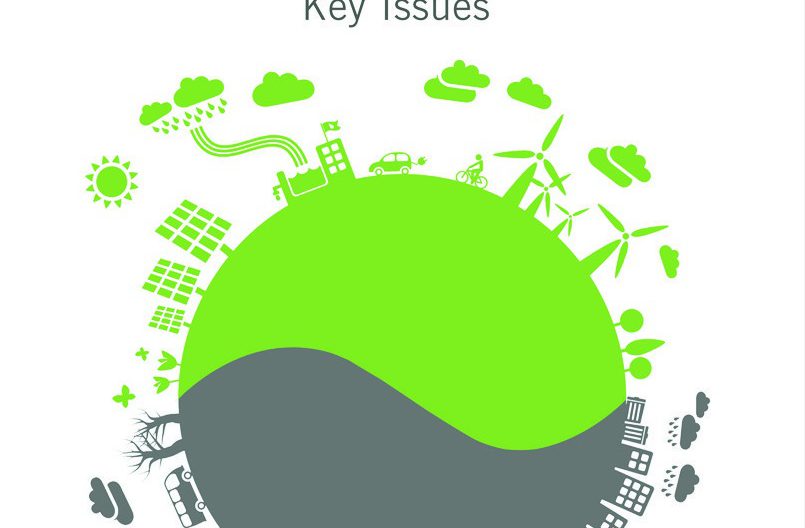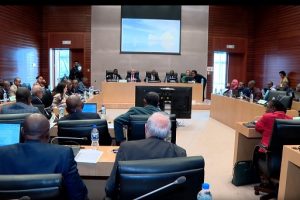
There has been a growing concern about global climate change mainly arising from energy-related carbon dioxide (CO2) emissions. To effectively reduce CO2 emissions while keeping economic growth, different countries have begun to search for new development paths among which low-carbon development has become a widely advocated one.
The concept of low carbon development has its roots in the UNFCCC adopted in Rio in 1992. In the context of this convention, low carbon development is now generally expressed using the term low-emission development strategies (LEDS – also known as low-carbon development strategies, or low-carbon growth plans). Though no formally agreed definition exists, LEDs are generally used to describe forward-looking national economic development plans or strategies that encompass low-emission and/or climate-resilient economic growth (OECD, IEA 2010). A low-carbon economy is the early phase of low-carbon development, during which reducing CO2 emissions in economic development is the main target. To achieve this goal, a country needs to formulate a clear plan to promote low carbonization in its economic development.
Various countries/organizations may give different interpretations of the concept of “low-carbon development”. EREC (2008) defines it as substituting fossil fuels with low-carbon energy based on the assurance of economic growth and rising residential welfare.
A low-carbon economy is now the most widely accepted development pattern of an economy. In 2003, the UK government first proposed the concept in its Energy White Paper as gaining more economic output by less consumption of natural resources and less environmental pollution.
On September 3, China held the Taiyuan Energy Low Carbon Development Forum 2021 successfully, which is themed with “Energy, Climate, and the Environment”. According to a press release from the Chinese Embassy in Addis Ababa, Chinese Premier Li Keqiang attended the opening ceremony and delivered a keynote speech. Ethiopian President Sahle-Work Zewde attended and addressed the forum via video links.
Premier Li said, the Chinese government attaches great importance to high-quality development and tackling climate change. President Xi Jinping announced China’s pledge to peak carbon dioxide emissions before 2030 and achieve carbon neutrality before 2060. In recent years, China has seen improving ecological and environmental quality amid efforts in pollution prevention, optimization of the energy mix and industrial structure, and intensified efforts to save energy and reduce emissions. Not long ago, China launched the world’s largest carbon emissions trading market.
Premier Li emphasized that, as the COVID-19 pandemic is still ravaging around the world, coupled with emerging variants of the virus, instability and uncertainty in the global economy are on the rise, bringing grave challenges to the green and sustainable development of the world. In this difficult time, all countries should work together closely to ensure that development and green transformation go hand in hand, reinforce each other and facilitate the transformation and upgrading. Premier Li proposed three points in this regard:
First, we should uphold a scientific spirit and take a pragmatic attitude in rationally utilizing clean energy and pushing low-carbon transformation. Second, we should integrate the respective historical responsibilities with national conditions of different countries, to make efforts to continue to advance global climate governance. Third, we should strengthen policy coordination and carry out structural reforms, while working together to achieve the balanced, green and sustainable recovery of the world economy.
Premier Li pointed out that China, as the largest developing country, is on track to accomplish socialist modernization by the middle of the century and provide the Chinese people with a prosperous life while realizing low-carbon and green development. This is an unprecedented undertaking in human history and will require arduous efforts. We will uphold the new energy-security strategy, push reforms in energy consumption, supply, technology and mechanism, and strengthen international cooperation on all fronts to advance the energy transition practically. While implementing cross-cyclical macro policy adjustment, China will speed up the optimization and upgrading of the industrial structure by, on the one hand, curbing the scale of production capacity of high energy-consuming and high-emission industries, and, on the other hand, striving to develop energy-conserving and environmentally-friendly industries, injecting new impetus to the global economic recovery.
President Sahle-Work said Ethiopia is tirelessly working to develop its energy sector in an environmentally sustainable way. Ethiopia has designed an ambitious national electrification program to achieve universal access to electricity by 2030.
President Sahle-Work praised the forum as an important platform to exchange views on how to build a better future by reducing carbon footprint. It’s also a platform to demonstrate and strengthen South-South cooperation and enhance efforts to build a greener economy that is different from the usual model of growth.
President Sahle-Work commended China’s commitment to strengthening international cooperation and tackling the effects of climate change and environmental degradation. China’s partnership and support are critical and will help developing countries like Ethiopia adopt technologies and best practices to meet these challenges by leveraging innovation.
China speaks highly of President Sahle-Work’s attendance. There is a solid foundation and huge potential in China-Ethiopia cooperation on energy and green development. China is ready to work with Ethiopia to deepen and upgrade practical cooperation in such areas.
Leadership and political commitment from the highest level is the most important factor for countries to jump-start the process towards a low-carbon development path. The role of high-level political commitment is crucial in light of other urgent development challenges that are high priorities on the political agenda.
Low-carbon development requires focused efforts with multiple issues. Unless there is coordination, cooperation and consensus across ministries that go beyond the conventional compartmentalized and fragmented approach, the effectiveness and efficiency of development efforts will be undermined. Establishing a new mechanism or strengthening existing mechanisms to carry out integrated and comprehensive planning and to support low-carbon development can expedite the process.
For many countries, the financing issues are one of the most difficult challenges, both in terms of generating and allocating domestic sources as well as finding funding opportunities internationally.
Within the current financial crisis, developing countries require strategic planning on financing and technical cooperation. Low-carbon development plans can be a tool for assessing and identifying financing priorities and the required sources of funding.
These plans can help developing countries focus on how to market the best-bet low-carbon programmes and projects to international donors. Projects and programmes reflecting predictable and credible short- to long-term targets, goals and strategies may be more attractive to donors in terms of providing funding. At the same time, to support the actions of the plans, governments can also consider how to generate funds domestically and how to invite private investment, depending on their country perspective.
In their planning, governments will need to consider how to allocate investment in a variety of areas, including science and technology, R&D, energy, eco-efficient infrastructure, green business, education and human resource development. Public funds need to be allocated today in areas where benefits can be derived in the longer term, such as low-carbon technologies that require long-term investment from the R&D stage to commercialization.
Skill and knowledge level to implement policy measures is a common hurdle for developing countries. Required skills training and education must be integrated into national low carbon development strategies and action plans as well as into education policies. Without a sufficient and capable human resource base, it will be difficult for countries to make a transition to a low carbon development path.
Governments need to lead on expanding public knowledge and providing appropriate information on the benefits as well as the associated burdens of low-carbon development.
Unless information dissemination and advocacy are fully carried out, it will be difficult to gain understanding and long-term support from the public. Awareness-raising must also be extended to government ministries and political leaders.
BY STAFF REPORTER
THE ETHIOPIAN HERALD SEPTEMBER 8/ 2021





